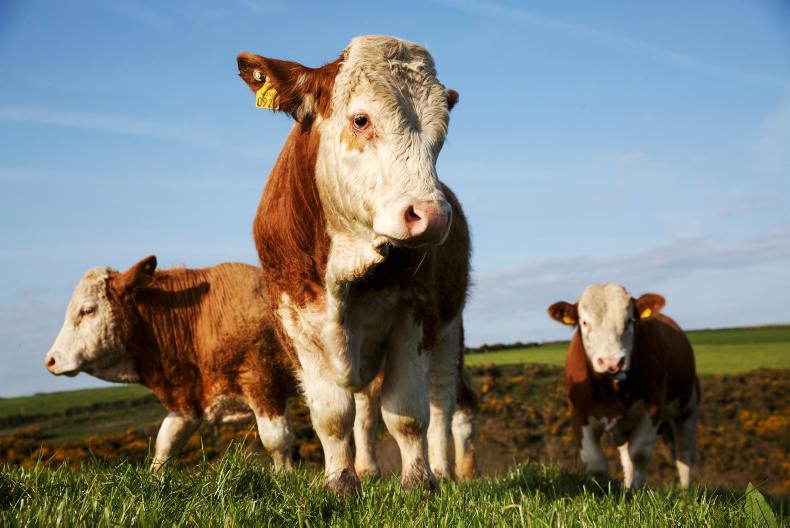I may have created confusion in my last piece about weighing calved heifers. I mentioned a heifer who was weighed a month after calving and had displayed two heats since calving. Perhaps I should have given more detail. The heifer in question calved at the end of February, was weighed a month later and between weighing and early May, when I submitted the article, had displayed two heats. While I like to have a fertile herd, they are not science-defying fertile.
Weighing cows and heifers in the middle of calving in the end of March was never going to give the best results in terms showing an animal’s potential and neither is it the best time to weigh, but it was the most convenient. Not long after this job was completed, the first calvers went off to the outfarm.
Bringing cattle into the yard there is a three-person job, as getting to the handling facilities requires movement on a public road. Cattle are generally worked on their own by myself on the blocks where they are wintered. It was interesting to see what cows weighed in and around calving time. I have weighed them in September for the last few years to see their working weight and use that, along with the weaning and carcase weights of their calves, to make breeding decisions.
The biggest cow in the place weighed 872kg in September; her first-calver daughter weighed 576kg at the same time.
Both animals had their first calf at 23 months. Their calves from last year were slaughtered recently. There was 15kg difference in the carcase weight of the bull from the mature cow than the one from younger cow. Not much return given she was 300kg heavier herself. That’s an example of why I prefer the smaller cow on the farm here.
The longest calving season in years is drawing to a close, with the cows making a big burst two weeks ago and thankfully most have had bull calves too.
I don’t know if it’s the same for other farmers, but there always seems to be a little bit of added wildness about late calves. Maybe it’s because I’m not walking through the sheds as regularly or perhaps it’s because the calves don’t have the comfort of a group initially.
I went through my old farm diaries recently and they made for interesting reading. Digging out the 2007 diary showed an evolution of the farm over the last decade. We were near giving cattle away in the previous store system. Now we’re getting carcase weight similar to that of the stores we used to sell at the same age. In terms of breeding, 2007 was the last year there was more than a handful of cows calving in May while breeding was well under way.
Of most interest to me was the fertiliser use. By 21 May 2007, 10.2t of artificial fertiliser had been spread. By the same date in 2017, the total spread on the farm is 3.6t. The reduction has taken place over time and sees both slurry and artificial fertiliser used more strategically, along with annual monitoring of soil fertility. I struggle at times to see where use of chemical fertiliser fits in with the sustainability stories we keep hearing.
I can’t ever see the farm going down the 100% organic route, but there is a lot that can be learned in terms of grass and soil management from that sector.






 This is a subscriber-only article
This is a subscriber-only article










SHARING OPTIONS: